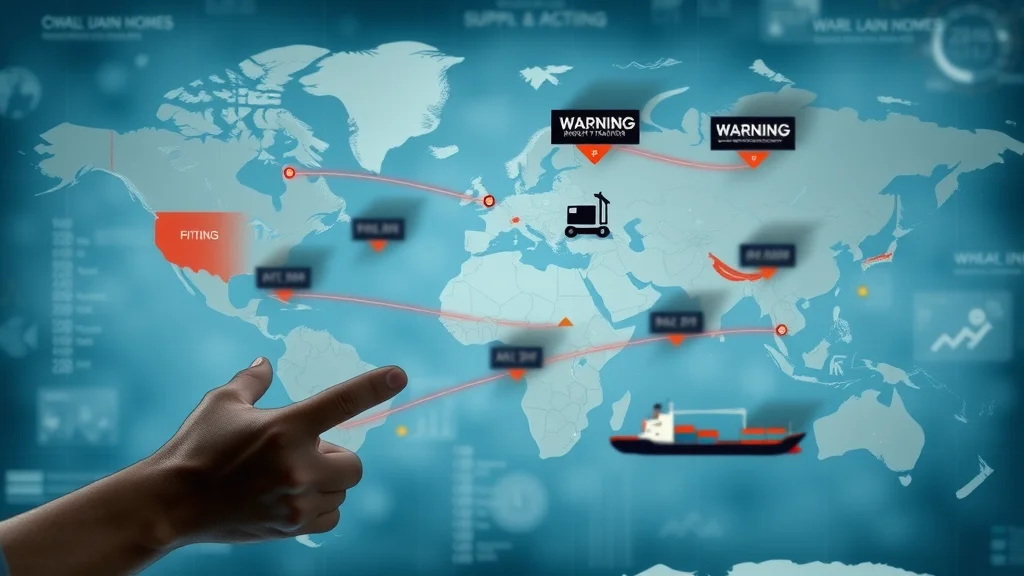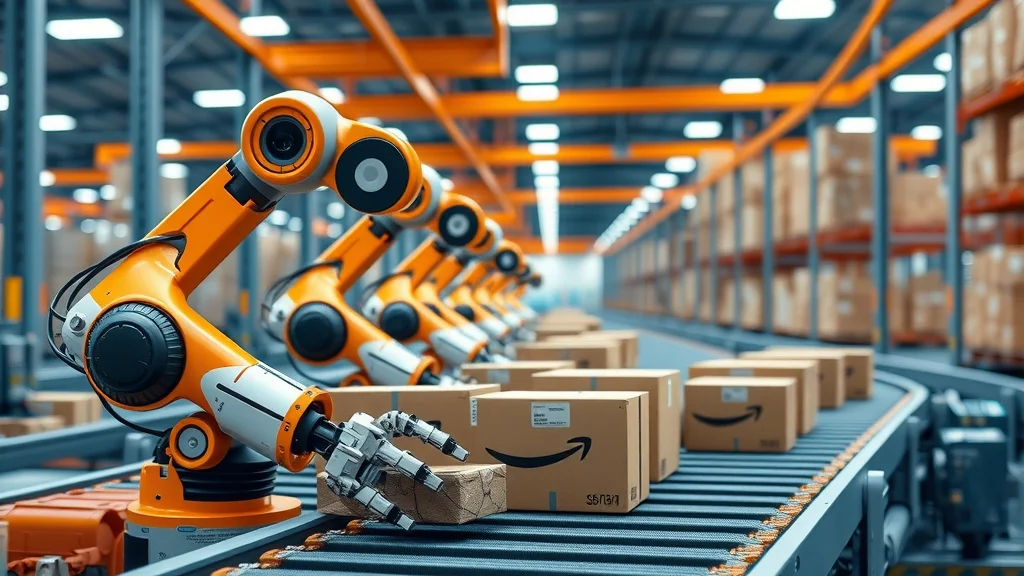Did you know that global tariff changes since 2018 have led to over $80 billion in additional costs annually for companies worldwide? The ripple effects of tariffs don’t just impact trade statistics—they can create chaos throughout the entire global supply chain. Today’s volatile tariff environment is no longer an exception; it’s becoming the rule, making supply chain planning riskier and more complex than ever before. In this article, we’ll cut through the noise and show you exactly how businesses must adapt to survive and thrive under these new global trade realities.
A Data-Driven Look at Tariff Impact on Supply Chain
The tariff impact on supply chain is profound and measurable. Data from leading trade organizations reveal that the imposition of tariffs, whether on raw materials or finished products, has led to not only sharp price increases but also unpredictable supply disruptions lasting across recent months. This volatility affects everyone—manufacturers, distributors, and consumers—by increasing overall costs, slowing delivery timelines, and complicating demand forecasting. Research shows that during recent tariff rate escalations, especially between the United States and China, shipping delays grew by nearly 20% while inventory buffers had to double in size for many exporters and importers to compensate for uncertainty.
For businesses, ignoring these numbers can mean losing valuable market share. The new normal is defined by increased trade war activity, where reciprocal tariffs and sudden policy changes force companies to rethink their entire supply network. Whether you operate in North America, Europe, Asia, or emerging markets, the ability to anticipate and react to tariff changes is now a competitive necessity. The meaningful question for leaders isn’t if they’ll need to adapt, but how quickly they can implement risk-mitigating strategies in their global supply chains.

Startling Facts: Unveiling the Real Cost to the Global Supply Chain
Global trade data exposes the scale of disruption: after consecutive rounds of tariffs, the cost of imported goods surged by up to 25% in key sectors, and global supply chain efficiency metrics have seen steady declines. For example, manufacturers faced inventory gluts while distributors and retailers grappled with thinner margins and longer lead times. The impact of tariffs isn’t contained to high-profile industries—ripples are felt throughout every level of the global supply chain. Research from industry analysts finds that, for every 5% increase in a tariff rate, logistics costs rise by 2–3%, further emphasizing the systemic burden placed on organizations of all sizes.
This aggregate impact is why many businesses are now prioritizing a systematic review of their supply chain vulnerabilities. With tariffs remaining a favorite tool in modern trade wars, companies large and small need to focus attention on data-driven scenario planning and diversification of supplier networks. Failing to do so risks exposure not just to profit loss, but to strategic obsolescence in a fast-evolving global economy.
- How the tariff impact on supply chain is reshaping global supply chains
- Why businesses must scrutinize global supply chain vulnerabilities
- Actionable steps to mitigate the impact of global trade tensions
- Expert opinions on adapting to the new trade war landscape
Understanding Tariff Impact on Supply Chain and Global Trade
To navigate the complexities of global trade, it’s essential to understand exactly how the tariff impact on supply chain unfolds in practice. Tariffs are essentially taxes on imported goods levied to protect domestic industries, but when applied broadly—as in the recent trade war between the US and China—the repercussions are far-reaching. Companies depending on imported raw materials or components suffer immediate cost hikes, which get passed down the chain, ultimately affecting finished product pricing and consumer purchasing power.
Moreover, these tariffs disrupt established trade agreements and force supply chain managers to re-examine long-established sourcing strategies. For global supply chain leaders, the challenge is not simply reacting to higher costs, but managing unpredictability—reacting to trade disputes, retaliatory tariffs, and evolving geopolitical tensions. Businesses with exposure in regions such as North America, Asia, and Europe must now plan for regular scenario analyses to protect themselves against the compounding impact of tariffs, which could otherwise result in loss of market share and systemic competitive disadvantage.
For organizations seeking practical solutions to these challenges, exploring actionable strategies can make a significant difference. A detailed breakdown of proven approaches to overcoming tariff-related supply chain disruptions is available in this guide on fixing supply chain struggles caused by tariffs, which offers step-by-step tactics for immediate and long-term resilience.
How Tariffs Disrupt the Global Supply Chain
Tariffs act as shockwaves, instantly reshaping the structure of global supply chains by increasing the cost of cross-border trade and triggering uncertainty that can stifle investment and innovation. When the United States dramatically raised tariffs on Chinese imports, both nations’ manufacturers experienced cascading consequences: higher input costs, price increases on finished goods, and sudden shifts in demand. Small to mid-sized businesses reliant on affordable imported components often struggle the most, being less equipped to absorb or pass along cost shocks, unlike larger multinational corporations that can diversify globally at scale.
The practical effects extend beyond simple math. Uncertainty over future tariff rates can lead to confusion and misaligned inventory strategies, which in turn results in idle assets and frozen capital. At the extreme, companies may even halt their investment in certain regions or technologies, unwilling to risk sudden, punitive cost changes. This has forced supply chain planners to lean heavily on demand forecasting and invest in better data analytics to stay ahead of the next major trade policy twist, signaling a permanent change in how companies view and manage their global supply chains.

Supply Chain Ripple Effects: Manufacturers, Distributors, and Retailers
"Tariffs have transformed the global supply chain from a reliable network into a game of risk management," says a leading trade economist.
The domino effect triggered by tariffs extends beyond just manufacturers—every link in the chain feels the pinch. Distributors, for instance, must contend with longer lead times and unpredictable delivery schedules, complicating just-in-time processes and inventory optimization. When cost shocks occur, retailers struggle to maintain price stability for end consumers, often forced to pass on increases or limit product availability. For industries like electronics and automotive, where complex supply chains span multiple continents, even a modest tariff can force complete overhauls of sourcing, assembly, and distribution strategies, risking lost market share in both domestic and international markets.
These challenges reveal an urgent truth: the resilience of any global supply chain now depends on its flexibility—its ability to absorb and adapt to sudden shocks in cost, regulation, or supply. Companies that invest early in alternative suppliers, advanced logistics analytics, and scenario planning are far better positioned not just to survive trade turmoil, but to identify new growth opportunities when competitors falter.
The Global Supply Chain in the Era of Trade Wars
The phrase trade war now dominates headlines, as countries apply retaliatory tariffs and renegotiate trade agreements to gain leverage or protect industries. The most significant example remains the showdown between the US and China, but similar tensions are escalating across the globe. Elevated tariffs and barriers have effectively ended decades-long assumptions about frictionless global commerce. The outcome? Supply chains are being rewired in real time as businesses chase lower risks and more resilient networks.
For business leaders, monitoring and interpreting the cascading effects of geopolitical tensions has become a daily necessity. What once was an esoteric concern for policy makers and diplomats is now a boardroom priority—with a new urgency for integrating tariff impact on supply chain into every strategic decision. This new era demands both agility and broad perspective, forcing companies to weigh the cost and reliability of every trade partner, shipping route, and sourcing region.
Political & Economic Drivers: The New Trade War Reality
The foundation of the modern trade war lies in both economic competition and political posturing. Governments use tariffs and other protectionist tactics to influence market share, appease domestic constituencies, and exert leverage in trade agreement negotiations. The Trump administration’s frequent use of import tariffs was intended to protect American manufacturing but ended up igniting retaliatory actions, creating an atmosphere of global uncertainty. For the global supply chain, these moves prompt complex calculations: Will a tariff last for years, or be lifted after only a few months? Should companies double down on automation or shift production to other regions?
These questions underscore a new reality for CEOs and supply chain managers—decision-making can no longer be static. Companies must move quickly to implement countermeasures that address not only direct cost increases but also the longer-term uncertainty around tariff policy and global trade. Strategic flexibility—backed by robust scenario planning—is the only safe position in a world where trade policy changes overnight.
Regional Focus: North America, Asia, Europe, and Emerging Markets
Regional dynamics shape the practical effects of tariffs. In North America, for instance, the US-Mexico-Canada Agreement (USMCA) altered the pattern of cross-border trade and production, while reciprocal tariffs with China forced manufacturers to seek alternative sourcing or manufacturing sites, often in Southeast Asia or Mexico. European companies found themselves caught between sanctions from the US and retaliatory tariffs levied by the EU or China, triggering an increase in operational costs across multiple supply chains. Meanwhile, emerging markets have become both alternative suppliers and new battlegrounds, offering lower costs but often with higher risks.
As different regions implement contrasting trade policies and tariffs, multinationals and exporters must stay vigilant to changing rules. The push to diversify away from single-country dependency is stronger than ever, and the right regional mix could mean the difference between profit and loss as global supply chains realign in response to ongoing trade war episodes.
| Region | Recent Major Tariffs | Industries Most Affected | Supply Chain Impact |
|---|---|---|---|
| North America | US–China tariffs on electronics, steel, auto parts | Automotive, Electronics, Machinery | Cost increases, shift to Mexico/Canada, inventory buildup |
| Asia | China tariffs on US soybeans, tech components | Agriculture, Semiconductors, Consumer Goods | Supplier diversification, trade realignment |
| Europe | Steel/aluminum tariffs, digital tax threats | Automotive, Aerospace, Tech | Rising costs, supply chain shifts to Eastern Europe, delayed investments |
| Emerging Markets | Reciprocal tariffs in textiles, chemicals, and energy | Textiles, Chemicals, Energy | Opportunity for expansion, but higher regulatory risk |
Effects on Raw Materials Sourcing and Costs
One of the most direct impacts of tariffs is seen in raw materials costs. When a government imposes tariffs on critical imports—such as steel, aluminum, or rare earth elements—the domino effect ripples throughout the entire supply chain. Manufacturers suddenly face higher costs, which work their way downstream to distributors and end customers. And it’s not just price: in some cases, retaliatory tariffs and limited trade agreements result in outright shortages, putting production schedules at risk and depriving factories of the raw materials necessary for finished-goods output.
The global supply market has shifted dramatically, with businesses seeking new suppliers to avoid excessive tariffs. While there is occasional good news—such as the opening of new trade corridors or a temporary reduction in certain duties—the overall trend has been toward higher costs, more complex compliance rules, and increased supply chain management overhead. Only those organizations with robust demand forecasting and multimodal sourcing strategies are able to maintain predictable, cost-effective production in the face of fluctuating global trade barriers.
Tariff Impact on Supply Chain Strategies and Adaptation
- Reshoring and nearshoring manufacturing
- Diversification of supplier networks
- Investing in supply chain resilience technologies
- Scenario planning for global trade volatility
In response to the tariff impact on supply chain, forward-thinking businesses are overhauling their global strategies. Reshoring (bringing manufacturing back to the home country) and nearshoring (moving it closer to end markets) have gained momentum, reducing dependency on long, vulnerable international supply chains. Diversification of the supplier network—finding alternative sources across multiple regions—provides a vital hedge against sudden tariff or regulatory changes. The move isn’t just about chasing cost savings; it’s about building adaptability and redundancy into the modern global supply chain.
Additionally, companies are embracing technology as a strategic asset. Tools like real-time analytics, blockchain-powered traceability, and advanced demand forecasting allow firms to identify and react to supply chain disruptions faster, minimizing the impact of policy changes. Perhaps most notably, scenario planning has shifted from a theoretical exercise to a tangible business discipline, with board-level focus on regularly modeling the effects of hypothetical tariff increases, trade wars, and regulatory shifts.

Case Study: How a Global Supply Chain Leader Adapted to Tariff Shocks
Consider the example of a leading global electronics manufacturer that historically sourced key components from China. The imposition of new US tariffs in recent years immediately raised input costs by 15%. Rather than absorb the costs or pass them entirely to consumers, the company executed a three-step adaptation: First, it audited and diversified its supplier base, tapping into partners in Southeast Asia and Mexico. Second, it invested in supply chain visibility through digital tracking and scenario simulation, ensuring early warnings for potential delays or cost spikes. Finally, it engaged in direct negotiations with logistics providers and government agencies to secure tariff exemptions wherever possible.
This concerted strategy enabled the business to preserve market share and maintain competitive pricing, even as competitors struggled with shrinking margins. The transformation wasn’t easy—requiring new investments, staff training, and cultural shifts—but it proved critical in managing the ongoing volatility of global trade. The lesson is clear: holistic, proactive supply chain management is now a defining trait of industry leaders in a high-tariff world.
The Future of Supply Chains in a High-Tariff World
As governments worldwide double down on tariffs and protectionism, the future of the global supply chain will be shaped by innovation, resilience, and sustainability. Where yesterday’s practices relied on cost minimization, tomorrow’s supply chain leaders will prioritize agility and transparency. The companies that thrive will be those that actively monitor global trade dynamics and harness emerging technology to stay ahead of disruption.
With the pace of change only accelerating, top performers are expected to update their global supply and sourcing strategies regularly, ensuring they can weather any future trade war or tariff shift. Investing in predictive analytics, supply chain automation, and tighter relationships with key partners is not just a choice, but a necessity for companies aiming to compete—and win—in the evolving landscape.
Technology Innovations Revolutionizing Global Supply Chains
Innovative technology has become the most potent weapon against tariff-induced disruption. Advanced warehouse automation, powered by artificial intelligence and robotics, allows companies to maintain high-speed, low-cost fulfillment even as external costs rise. Blockchain-enabled traceability helps not only with compliance but with quickly identifying supply bottlenecks or cost increases. Predictive analytics—integrating trade policy updates, global economic indicators, and real-time supply chain inputs—empowers supply chain managers to make agile, data-driven decisions before emergencies occur.
Moreover, cloud-based collaboration platforms enable transparent communication among global partners, ensuring a coordinated response to new tariffs or regulatory changes. As supply chains become more digital, the riskiest links are replaced by smart, automated nodes that can adapt dynamically to any policy shift. Technology is now the cornerstone of any resilient, future-ready global supply chain.

Sustainability and Tariff Impact on Global Supply
While cost and speed remain critical, there is an increasing emphasis on sustainability, further amplified by the challenges of tariffs. Tariffs can inadvertently incentivize or discourage sustainable sourcing, depending on how policies are written. For instance, tariffs on imported goods with high carbon footprints have encouraged some firms to seek local, more sustainable suppliers. Conversely, shifting supply chains in response to tariffs might also lead companies to source from regions with laxer environmental standards, creating new sustainability concerns.
The future will likely see a blending of tariff strategies with environmental, social, and governance (ESG) initiatives. Savvy businesses are already integrating sustainability evaluations into their supply chain decisions, factoring in both the ecological and policy risks associated with various trade partners. In essence, the next frontier for global trade and supply chains will be defined as much by sustainability reporting as by tariff calculus itself.
People Also Ask: Common Questions About Tariff Impact on Supply Chain
How do tariffs affect supply chain efficiency?
Tariffs typically raise costs across the supply chain by increasing prices on key imports and raw materials. This not only causes direct price increases for goods, but can also lead to longer shipping timelines, greater inventory holdings, and more complex sourcing strategies to sidestep tariff exposure. Over time, efficiency can drop as businesses need to reengineer logistics and sourcing to adapt to shifting tariff policies.
What are the main challenges companies face during a trade war?
The main challenges include increased costs from tariff rates, demand forecasting difficulties due to policy uncertainty, and potential market share loss when foreign competitors are less affected by tariffs. Additionally, companies must navigate retaliatory tariffs and shifting trade agreements, often resulting in sudden supply chain realignments and new compliance hurdles.
Can businesses avoid the impact of tariffs altogether?
While complete avoidance is rare, businesses can minimize the tariff impact by diversifying suppliers, reshoring or nearshoring production, and investing in technology-led supply chain resilience. Proactive scenario planning and active monitoring of global trade trends further help companies stay ahead of new tariff risks and adapt their operations as needed.
FAQs: Tariff Impact on Supply Chain and Global Trade
How will reshoring influence global supply chain strategies in the future?

Reshoring—bringing production back to a company’s home country—will continue to reshape global supply chain strategy by reducing exposure to tariffs, trade wars, and geopolitical uncertainty. Companies benefit from more predictable logistics, closer coordination between R&D and manufacturing, and a more controlled compliance environment, although this may come at a higher labor or input cost. Increasingly, technology and automation are helping offset these costs, making reshoring an attractive long-term option for resilient supply chains.
What sectors are most affected by recent tariff changes?
The most impacted sectors include automotive, electronics, steel and aluminum, agriculture, and consumer goods. These industries often rely on complex cross-border supply chains or are singled out during trade agreement negotiations. Companies within these sectors face direct input cost spikes, supply interruptions, and price sensitivity among consumers, forcing them to innovate sourcing, pricing, and distribution models faster than others.
How can businesses calculate the total cost of tariff impact on supply chain?
Businesses should consider both direct and indirect costs. Direct costs include the tariff rate applied to the value of imported goods, while indirect costs cover increased logistics expenses, compliance costs, changes to demand forecasting, and potential lost sales due to price increases. Analyzing total landed cost (including tariffs, shipping, insurance, customs, and storage) gives a comprehensive picture of the true tariff impact on supply chain finances.
Key Takeaways on Tariff Impact on Supply Chain
- Be proactive in monitoring global supply chain trends
- Reevaluate global supply and sourcing strategies regularly
- Invest in technology and scenario planning for supply chain resilience
- Collaborate across the supply chain to reduce risk
Supply Chain Leaders Roundtable: Tariff Strategies Unpacked
Final Thoughts: Staying Ahead Amid Tariff Impact on Supply Chain
"Only those supply chains that adapt quickly can survive the uncertainty of global trade disruptions."
Actionable Next Steps for Businesses Impacted by Tariff Changes

Stay updated on global trade shifts—tariffs, reshoring, and supply chain updates could reshape your strategy. Subscribe to Global Trade News for the latest updates or call 203-271-7991 today.
As you continue to navigate the evolving landscape of tariffs and global supply chain management, it’s crucial to stay informed about the broader trends and overlooked factors that could impact your business. For a deeper dive into the nuances and strategic insights that many organizations miss, explore what everyone overlooks about the tariff impact on supply chains. Gaining this advanced perspective can help you anticipate challenges before they arise and position your company for long-term success. Embrace the opportunity to turn uncertainty into a competitive advantage by expanding your knowledge and refining your approach to global trade.
Recent developments in U.S. trade policy have significantly impacted global supply chains, necessitating strategic adaptations by businesses. The article “US retailers brace for impact as Trump’s 100% China tariffs loom” highlights how impending tariffs are prompting retailers to adjust their inventory strategies to mitigate potential disruptions. (reuters.com) Similarly, “Oil executives flag increased costs from Trump’s tariffs” discusses the rising operational expenses in the energy sector due to increased tariffs on essential materials. (reuters.com) For a comprehensive understanding of these challenges and actionable strategies to navigate them, these resources offer valuable insights.
 Add Row
Add Row  Add
Add 




Write A Comment